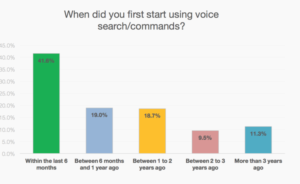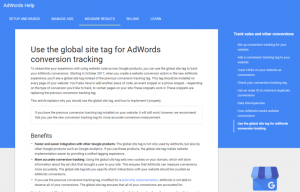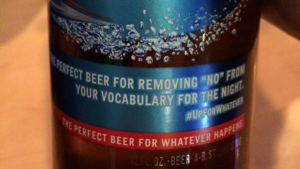Here are ways brands can ensure they’ve got the customer data they need for a succesful CDP implementation.
The sunsetting of third-party cookies and evolving privacy regulations impact how companies gather and use consumer data. A customer data platform (CDP) is a spectacular tool for unifying, segmenting and activating your first-party customer data.
Since CDPs depend on how you collect your customer data, marketers need to put some work in on the front end to reap the full benefits of the tool. While they improve visibility into customers’ profiles and behaviors, these tools can also identify weaknesses in data collection strategies and policies.
Data vulnerabilities like typos, incorrect formatting, intentionally wrong information and disposable email addresses are not entirely avoidable. Still, a bit of effort on the front end can greatly improve your CDP’s performance, increase the impact of your marketing campaigns and deepen your relationship with your customers.
These four key strategies can help reduce mistakes and encourage the most accurate responses from your customers, making the most out of your first-party data.
1. Evaluate how you collect your customer data
Your website likely has evolved substantially over the years with exciting new content and additional forms used to collect data in new and convenient ways. It’s important to prioritize frequent site reviews and standardize how you collect specific data points on all web forms.
Form questions
How you ask questions on your forms should be consistent to ensure that your organization and customers understand how data is being collected and used.
For example, now that text messaging is becoming a more important part of marketing communication plans, it is critical to know if a phone number is a personal mobile, shared landline or office number.
Drop-down fields
You should also regularly review your form drop-down selections. You may have critical data points that require a drop-down selection in order to segment customers properly.
Since these drop-down selections evolve, you must evaluate all the forms on various platforms managed by different teams to ensure the values remain synched. Keep a single record of all places a specific question is asked to ensure that future updates propagate to every relevant form.
Consent preferences
Be consistent and comprehensive with customer consent. Using different platforms to collect user data makes the need for consistent consent management even greater.
Implementing global consent management with your CDP can reduce privacy risk and improve customer experience.
Don’t forget that you are likely collecting customer data in places other than your primary site, including:
- Customer service reps.
- International websites.
- In-store/on-site.
- Live events.
- Third-party web forms.
- Affiliate sites.
These data sources should be viewed as opportunities to improve your overall customer experience.
Customers will likely remember the information they provided when interacting with your organization at these varied touchpoints.
You need to reciprocate by remembering those interactions to build a trusted relationship with every customer regardless of how they choose to interact with you.
2. Enable your customers to help you improve your data quality
Now that you have unified your data collection sources, it is time to look at your form fields that enable your customer to respond, as they are typically the biggest potential source of dirty data.
You can help guide your customers to provide accurate and consistent information with field validation. Some examples include:
- Verifying postal addresses on all forms that collect them.
- Dissuading customers from using disposable emails.
- Limiting phone fields to 10 digits.
- Requiring a valid area code for submission.
Looking beyond the initial data collection, don’t expect customers to update their data as their lives change — prompt them.
A percentage of your previously accurate data becomes invalid daily as customers move, change jobs with new contact information or switch ISPs/mobile phone carriers.
Consider prompting the customer via a different marketing channel to update their information when you receive a permanent error from a previously responsive opt-in mobile number or a hard bounce from an opt-in email address.
3. Streamline data collection and build relationships over time
It is common for marketers to provide a new customer with an overly long form to collect as much information as possible at the first opportunity.
Shortening a form even by one or two fields will decrease the form abandonment rate by your prospective customers. This will require some experimentation to balance reducing the number of required fields with lowering the abandon rate.
Form abandonment rates increase substantially when customers believe they are being asked for information unrelated to the form’s purpose.
In addition, customize your site’s user experience to use the critical information you request. This provides a great user experience and justifies the time it takes to provide accurate information.
Customer surveys, outcome quizzes and feedback forms should not be isolated campaigns. Rather, they should be used to progressively build your customer profile as your relationship grows.
Ask the question at a different time in a different way instead of requesting that information in a form that feels neither natural nor beneficial to the customer. The latter approach frequently results in data that may mislead you about the customer’s interests.
Dig deeper: 6 data collection tactics for marketing in the cookieless future
4. Leverage data on hand to create a better user experience
As your relationship grows with the customer, demonstrate that you use the data you collect to provide a more convenient or pleasurable experience. This encourages the sharing of more information.
If a customer doesn’t understand why you ask for specific data or see how it improves their experience, it greatly increases the odds of receiving inaccurate data.
Most importantly, listen to what your customers tell you and respond to what they do. No data you collect should discourage your customers from exploring new or different products.
If a customer says they like red widgets but always view blue widgets on the site, update the experience based on the repeated behavior. Often, people do not update their preferences as frequently as their tastes, circumstances or needs change.
Make incremental improvements to customer data quality
Customer data is key for continued growth — and a CDP is the engine to tap into the potential. CDPs will help you to develop a loyal customer base by personalizing the multi-touchpoint customer journey. Incrementally improving your data quality will maximize a CDP’s impact on your marketing efforts.
The post 4 CDP strategies to unlock the power of first-party data appeared first on MarTech.
MarTech(2)




